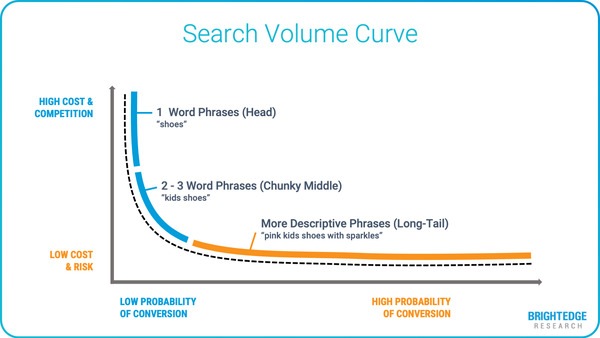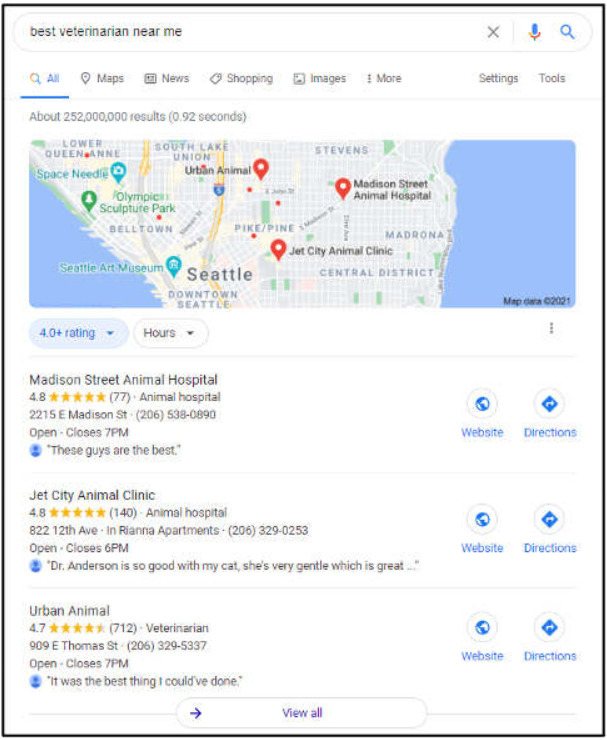Updated March 2022
Keywords are among the first things that budding search engine optimizers learn about. They’re part of the fabric of the internet itself. And they’re fundamental when it comes to building an effective, data-driven strategy for generating organic traffic.
However, it’s common for SEOs to fall into a trap when they first encounter keywords. They find a straightforward definition, get to grips with the core features of their preferred keyword research software, and memorize the fundamentals of on-page SEO.
They then assume they’ve learned everything there is to know. But keywords are a vast topic. There are long-tail keywords, geo-targeting, intent, anchor text, advanced research—the list goes on.
In this guide, we’ll provide you a thorough overview of keywords: what they are, how they work, and how to use them to drive traffic to your site. We don’t cover everything—that would take much more virtual space than a single post—but you’ll be left with a solid foundation from which to develop your knowledge of keywords.
What Are Keywords?
When a user enters a query into a search engine—such as “calendar,” “pizza toppings,” “women’s running shoes,” or “best BBQ restaurant near me”—they are served with a list of relevant web pages. This keyword-focused set of results is known as a “search engine results page” or “SERP.”
These queries, irrespective of whether they’re made up of a single word or a dozen, are called keywords. Google’s primary job is to figure out the intent of these phrases—to answer the question, “What is this user searching for?”—and provide relevant, helpful content.
What Is Keyword Intent?
Keyword intent refers to the reason that a person enters a query into Google. It is their desired informational outcome. In general, long-tailed keywords—multi-term keywords with comparatively small search volumes—instruct search engines more clearly of a keyword’s intent than shorter single-word keywords.
For example, if you type “best BBQ restaurant near me,” a search engine can ascertain your intent fairly easily. It knows you want to find a BBQ restaurant nearby so you can eat some tasty ribs.
In contrast, a broad keyword such as “calendar” carries a myriad of different search intents. Searchers may wish to define the term “calendar,” buy a calendar, open Google calendar, download a calendar app, print a calendar, and so on.
Why Are Keywords Important?
For marketers, web admins and SEO analysts, keywords are important because they provide powerful clues about searcher and customer behavior. They give you the information you need to put together a content strategy that drives targeted traffic to your website.
Keywords are used to achieve the following outcomes:
- Determine which topics and sub-topics have high search volu'sthme (number of monthly searches) and are therefore likely to drive traffic to a website. For example, a food blog will be interested in knowing how often a term like “best BBQ restaurant” is searched for.
- Optimize the on-page headers and metadata of a piece of content. These are known as on-page ranking factors. Search engines like Google use them to algorithmically sort websites to determine which set of pages best serves the intent of a particular keyword.
- Track the popularity of keywords and topics over a set period of time. For example, many businesses maintain a data-driven content calendar that accounts for seasonal terms, like “best Christmas presents,” and fluctuations in the interest of certain topics, like fad diets or new product releases.
In short, keywords can be thought of as data-driven truth serums that help you understand your target audience and enable you to create your content that serves your website visitors’ needs.
Types of Keywords
In the following section, we’ll look at three keyword categories: long-tail, geo-targeted, and branded. These keyword types generate different results, and your search strategy should account for this.
Targeting the right keyword types gives you the best possible chance of capturing web visitors that will turn into leads and paying customers.
Long-Tail Keywords (vs. Short-Tail)
Keywords can be single words or complex multi-word phrases. A keyword with more than three words is usually called a “long-tailed keyword.” They tend to be descriptive phrases with specific intent.
But this isn’t quite the full picture. While many people refer to multi-word phrases as “long-tail keywords,” it is actually search volume that determines whether or not a keyword is long-tail. Longer keyword phrases tend to have lower search volumes. However, this isn’t always the case.
Long-tail keywords generally have lower monthly search volumes than short-tailed ones because they are specific. But long-tail keywords also tend to drive more conversions than short-tailed keywords and are easier to rank for because competition from other websites is lower.
Content that is well-optimized and accounts for long-tail keywords better meets its target audience’s needs and, as a result, ranks higher in search engines.

Geo-Targeted Keywords (Local vs. Global Keywords)
Some keywords carry local search intent. This is the intent to carry out an action or purchase locally. These keywords tend to have specific local qualifiers such as “near me,” “where,” or a specific city name, for example, “top veterinarian Seattle.”
Results for local keywords are always location-specific and appear in a dedicated area above generic listings. This is called the local search 3-pack. Local terms and their monthly search volumes are usually much smaller than global keywords (keywords without local search intent).

Here is an example of a local, geo-targeted keyword, with related global keywords as a comparison:
| Keyword Type | Keyword | Monthly Search Volume |
|---|---|---|
| Local | best veterinarian near me | 8,100 |
| Global | best veterinarian | 720 |
| Global | veterinarian | 1,000,000 |
Branded Keywords (vs. Unbranded Keywords)
Branded keywords are keywords that include an official brand name, like “Nike shoes” and “Starbucks coffee.”
While branded keywords generate the highest conversions of any type of traffic because searchers are looking specifically for a branded product, it is usually only official retailers that will optimize for them. If you run an ecommerce store, targeting branded keywords will likely be worthwhile.
One notable exception to this rule applies to review-style websites—for example, a personal blog reviewing Nike running shoes.
It is unusual for smaller sites to compete with large retailers in search engines. This is because it is difficult for comparatively low-authority sites to achieve meaningful rankings for branded keywords with exclusively commercial intent. However, keyword phrases that include brand names alongside words like “review,” “rating,” “buying advice,” and so on are often worth pursuing.
How to Choose the Right Keywords:
Without the right approach, finding high-traffic keywords and optimizing your content is laborious and confusing.
Keyword research is the process of uncovering high-volume search terms within your industry. You can then optimize your content for maximum relevance, which will lead to greater visibility in search results.
Follow the five steps below to find high-volume, targeted keywords:
1. Identify Your Business Goals
What goals are you trying to accomplish with your content strategy? Do you want to generate more leads and sales? Close more deals? Create more visibility and engagement?
Every goal corresponds to a specific category of web user and search intent. Having a clear sense of your desired outcomes guides you towards the keywords you should be researching, whether long-tailed, short-tailed, local or global.
2. Analyze Competitors
There’s a famous quote about artists: “Good artists copy but great artists steal.” And it applies to SEOs too! If you see someone else doing something that works, what’s to stop you from copying them?
Look at competitors that are ranking well for keywords you also want to rank for. Then ask, “How have they optimized their content—on-page header tags, keyword density, metadata— for these topics?”
3. Create a Seed List for Keyword Research
Once you have identified your goals and scoped out your competitors, you’ll have a pretty good idea of which topics to target, along with some specific keywords.
For example, if you are a pet company and want to expand your blog content, you might have target keywords like “dog health insurance,” “dog summer activities,” “healthy cat food,” “cat pet carriers,” and so on.
Use these initial target keywords to form your seed list, the core collection of keywords that will guide your future research. Group similar keywords together—for example, all the dog keywords in one group and all the cat keywords in another—and use a keyword research tool, such as the BrightEdge SEO Platform, to generate even more high-volume queries.
4. Categorize Your Raw Keyword List
After expanding your seed lists, you should have a long list of related keywords. These keywords are the raw materials for your future content.
If you have broad, short-tailed keywords, like “dogs,” your content will be wide in scope. Content focused on long-tail keywords, like “health insurance for senior dog surgery,” will be more specific.
Before diving into content creation, however, you need to pare down your list. Many keywords will not be relevant to the business goals you outlined in the first stage.
For example, if your business goal is to drive more conversions for a local line of women’s shoes, you should collect keywords that are long-tailed, branded, and have local intent “Womens’ blue jogging shoes” and “where to buy women’s clog sandals near me” are both examples that fit these criteria.
5. Determine Your Content Optimization Strategy (Defend, Optimize, or Create)
Now it’s time to put those keywords to work!
With your pared-down, goal-oriented list of target keywords, it’s time to think about your content strategy. Specifically, you have the choice to defend, optimize, or create.
Let’s take a look at this approach in a little more depth.
How to Pick the Right Content Strategy: Defend, Optimize, or Create
There are three strategies to choose from when crafting keyword-focused content:
- Defend: This approach is useful when you have content that is already optimized for the keywords and topics that best meet your business goals. You are “defending” your content’s rankings, relevance, and authority in the search engines. For example, you may decide to make minor optimization changes to metadata or add up-to-date sections to existing text.
- Optimize: If you already have content targeting your chosen keywords and topics but the quality is poor and, as a result, it is underperforming, you should opt for the route of “optimization.” In this strategy, you analyze what is working and what is not with a view to improving and realigning content.
- Create: If you do not currently have content that targets your selected keywords, you will need to create new web pages. Content may take the form of blog posts, category pages, or landing pages.
Conclusion
Keywords play a fundamental role in search engine optimization. And they aren’t going away. In fact, search engines are continuously evolving when it comes to understanding user needs and the meaning and intent behind search terms,
For search engine optimizers, a thorough understanding of how to leverage keywords for traffic, leads and customers is an invaluable asset.
Links and Resources From BrightEdge
- Optimizing for the Google 3-Pack: A guide covering how to rank for local search results.
- Long-Tail Keywords: A Comprehensive Guide: An in-depth guide to long-tail keywords.
- What is Keyword Search Intent? A thorough look at keyword search intent.

